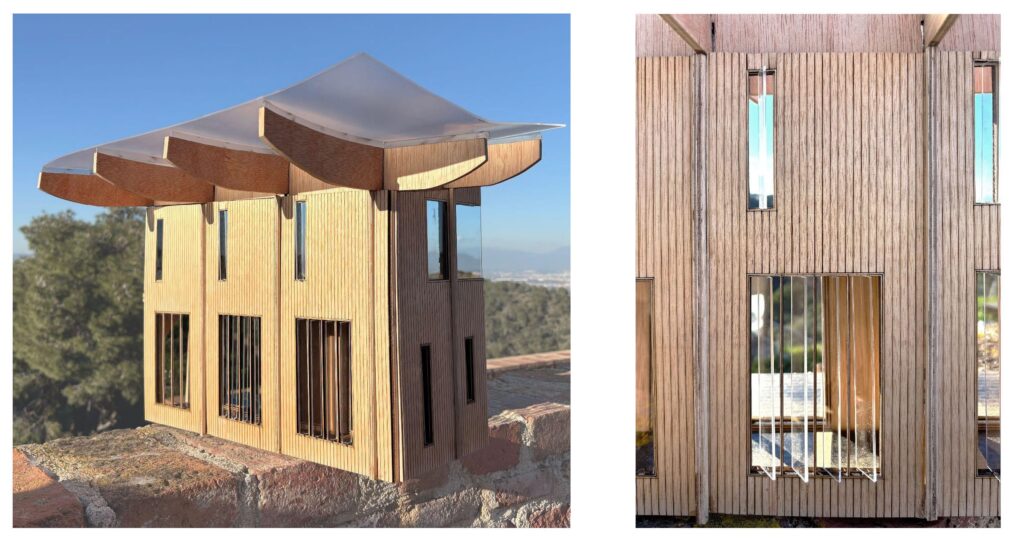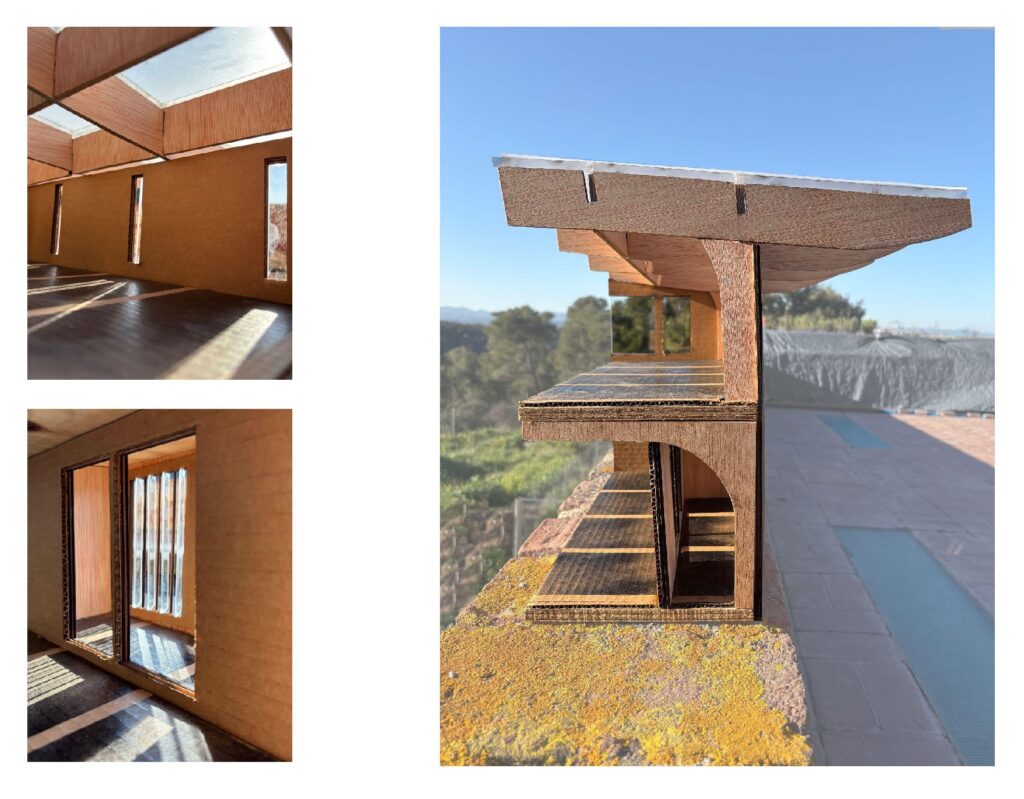The façade design emphasizes verticality, reinforcing a connection to the surrounding forest and the natural growth patterns of trees. Inspired by the structural grid of the waffle roof, this vertical rhythm is expressed through the cladding, creating a cohesive architectural language. The use of natural materials, particularly wood, highlights the building’s relationship with the sawmill’s function and enhances its integration into the landscape. Variations in transparency and depth within the façade introduce a dynamic interplay of light and shadow, adding texture while maintaining a strong yet refined presence.
Case Studies:
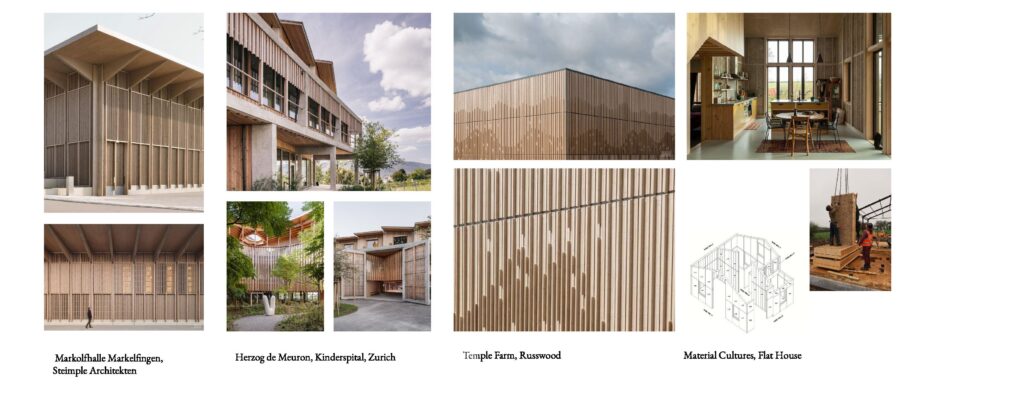
Verticality:
The rhythm and structure of the roof grid inspired the extension of its vertical elements down to the façade. This approach creates a strong sense of verticality, connecting the top of the building to the base. A clear main vertical line emerges, organizing the façade and unifying the architectural language. The result is a vertically driven composition that echoes the order and precision of the roof structure while grounding it in the overall design.
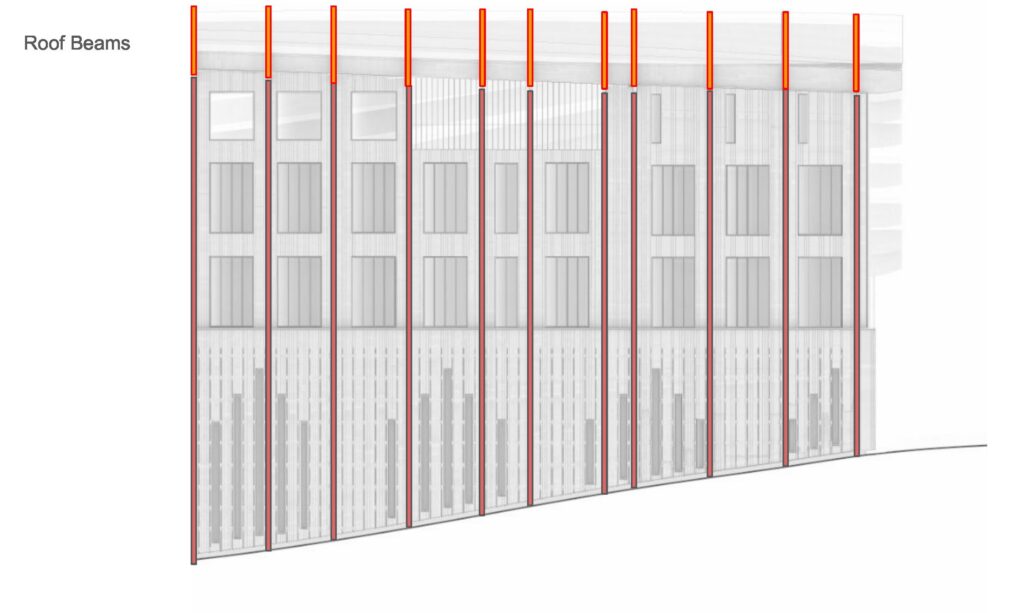
Industry Facade:
For the industry level, key façade requirements were defined to reflect both functional and aesthetic considerations.
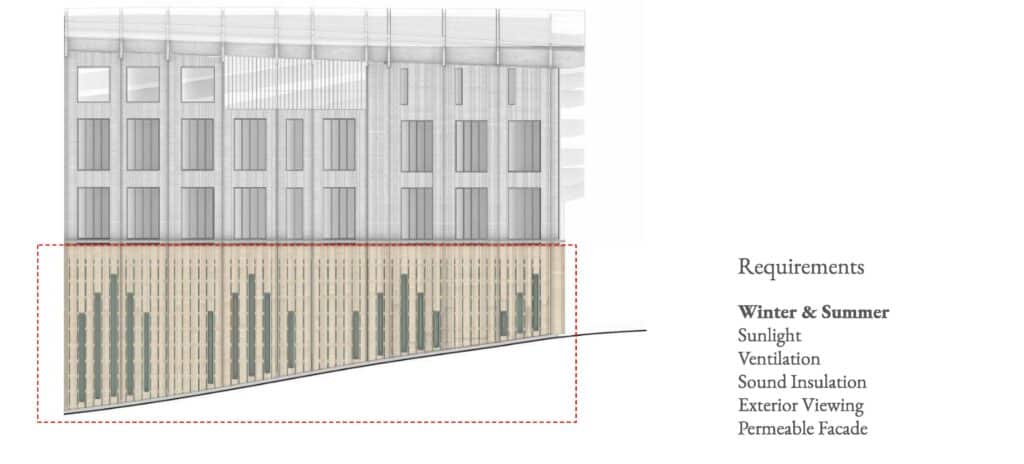
Industry Facade Materials:
At the industrial level, materials were selected to minimize noise escape, including hempcrete blocks, loam panels for flooring, and cork as an underlayment. The façade remains permeable to ensure ventilation, accommodating machinery that generates noise and heat without requiring special environmental conditions.
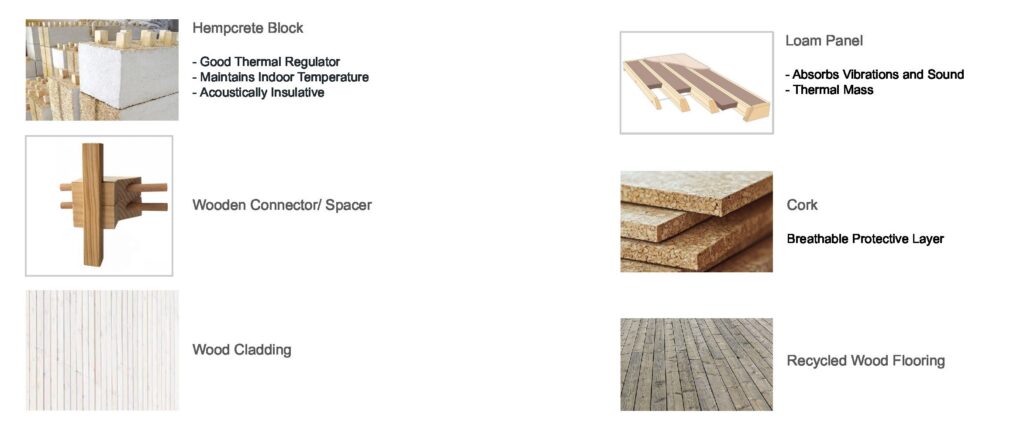
Industry Facade Details:
At the industrial level, hempcrete blocks were positioned in front of the cross-bracing, creating a façade that sits slightly offset from the rest of the structure. Since this level requires ventilation rather than glass, wooden connectors and spacers were designed to bridge the gaps. The hempcrete blocks, shaped in a V-form, function as a perforated noise barrier, balancing sound absorption with airflow.
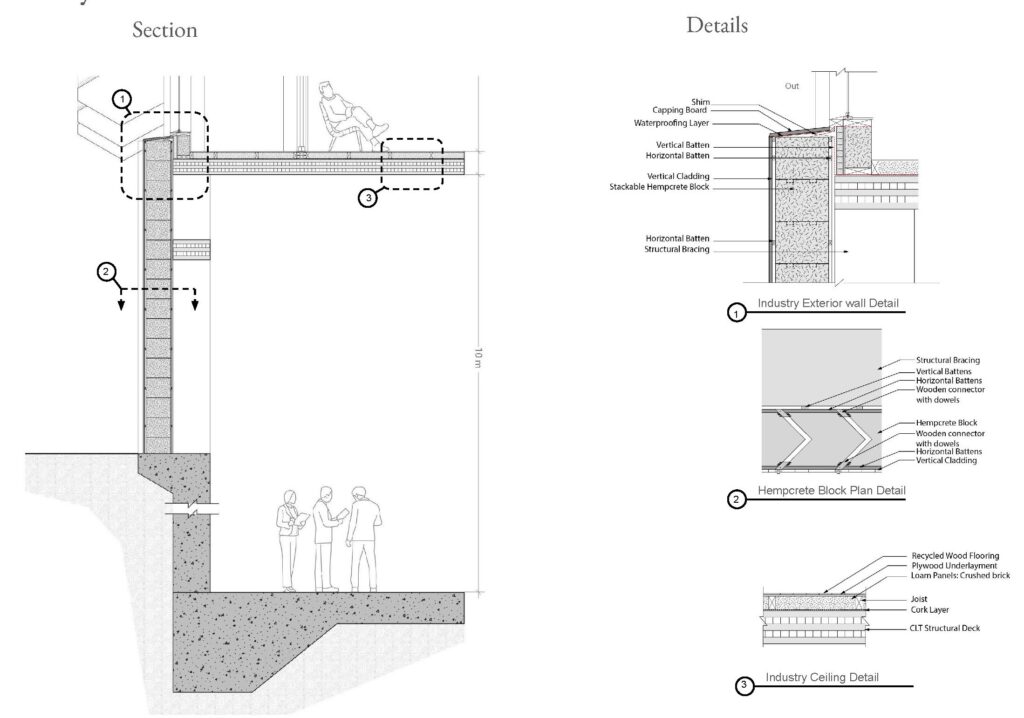
Hempcrete Blocks Enlarged View with connectors:
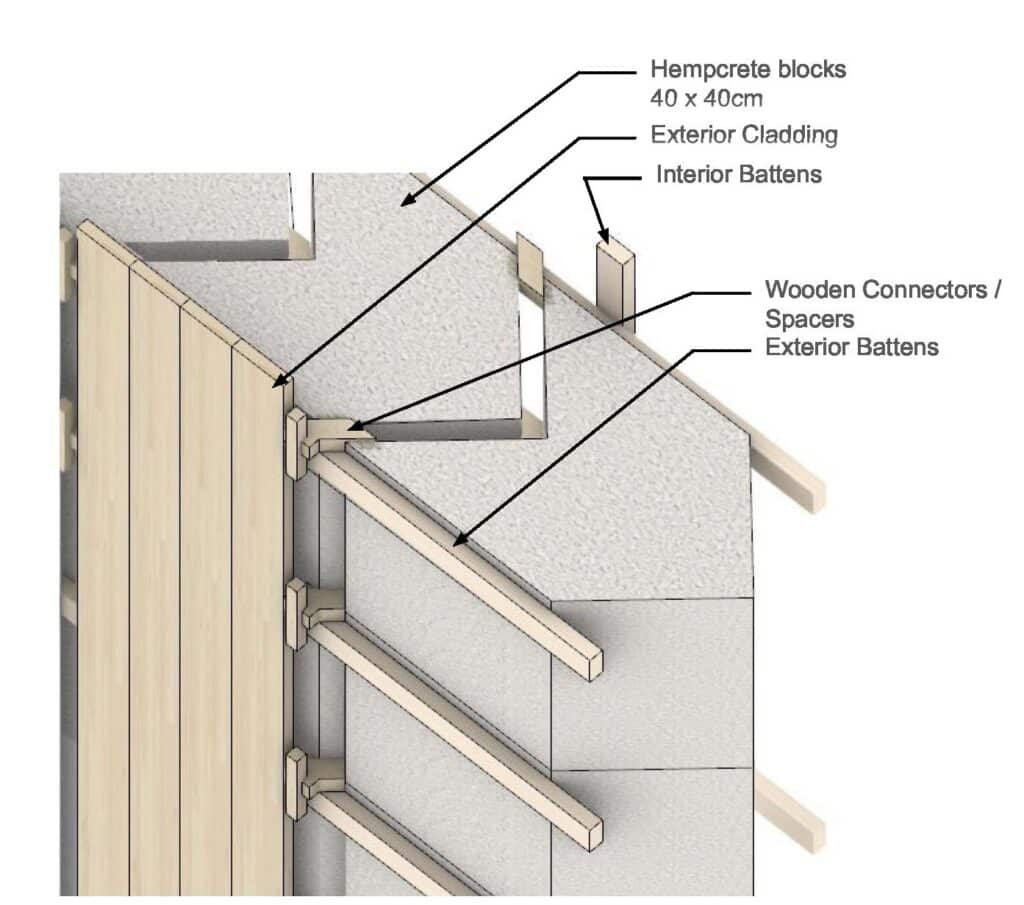
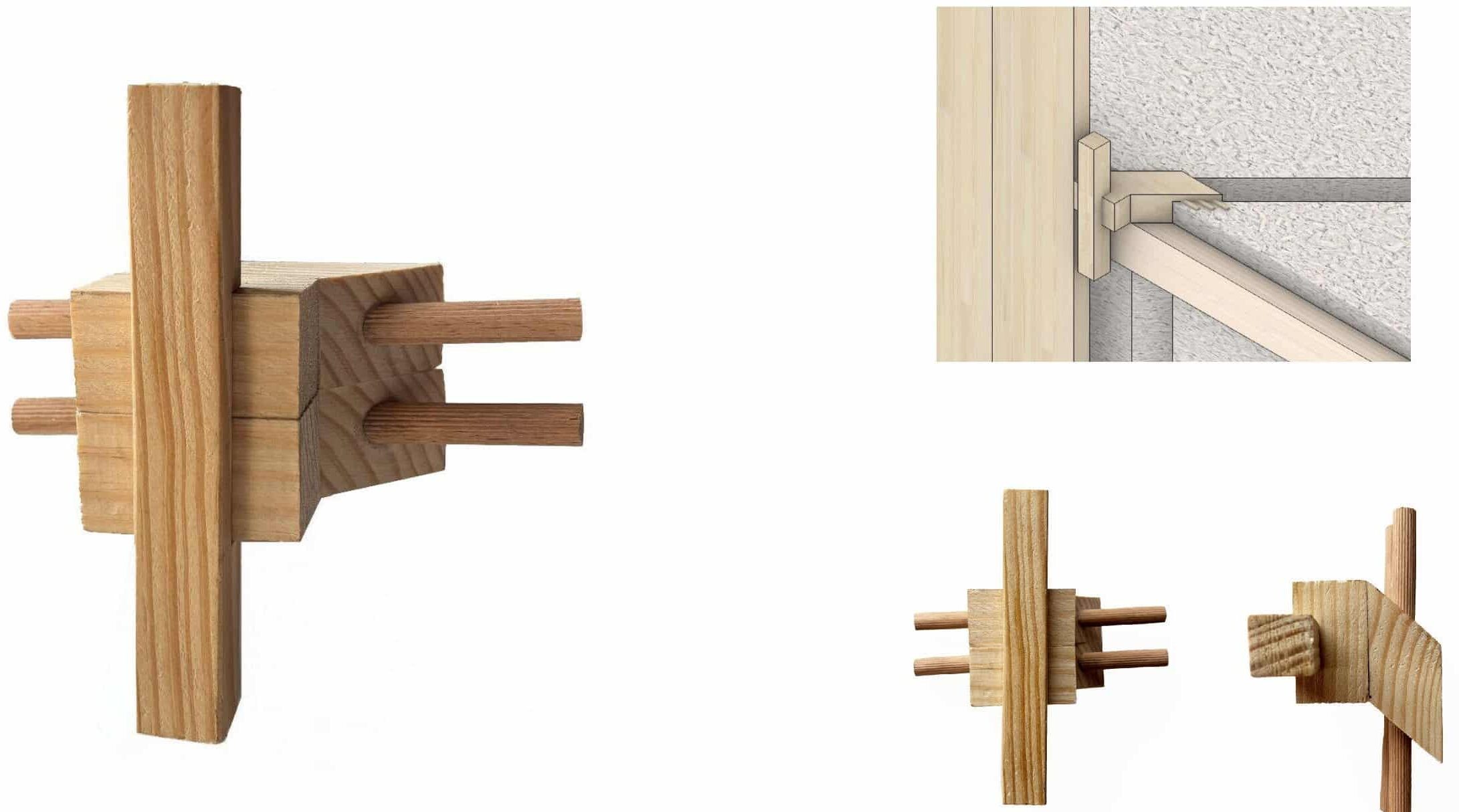
Residential Facade:
The vertical grid from the first floor is extended onto the residential level, preserving a cohesive design language. In locations where balcony windows are incorporated, the grid is refined to ensure a harmonious integration with the overall façade composition.
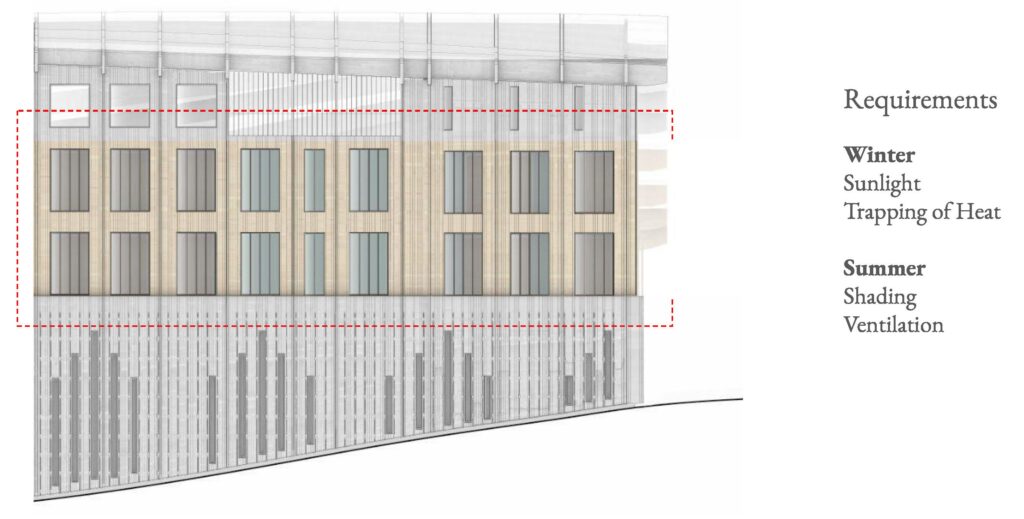
Residential Facade and Interior Wall Materials:
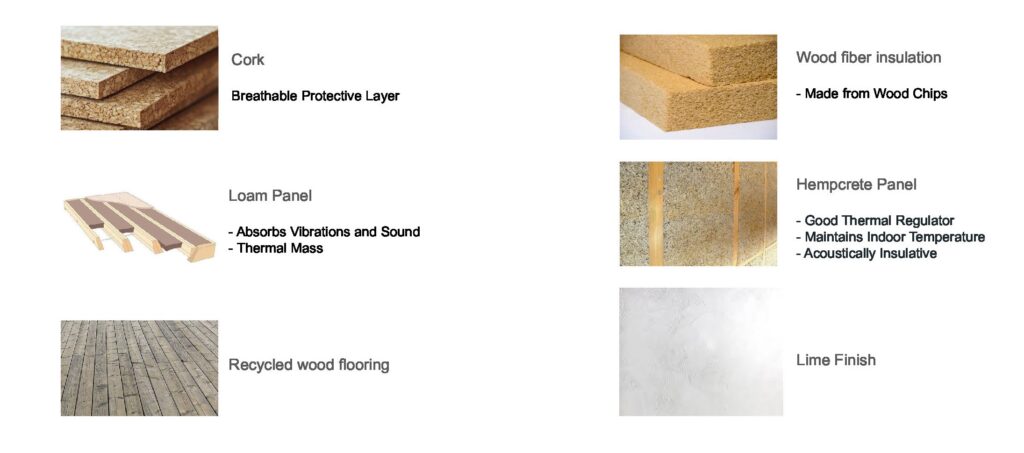
Residential Facade Details:
The interior walls are constructed with hempcrete panels, selected for their superior thermal performance, acoustic insulation, and sustainable properties.
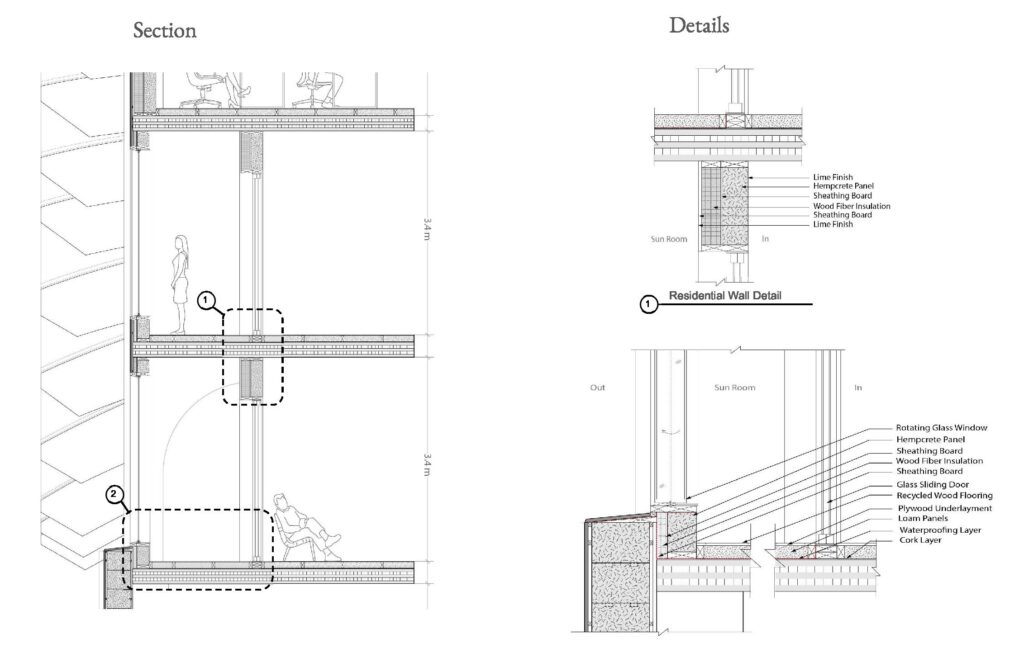
Sunroom and Library:
The sunroom’s exterior wall integrates louvered windows, facilitating passive ventilation in summer while functioning as a thermal buffer in winter, capturing and retaining heat to enhance overall energy efficiency.
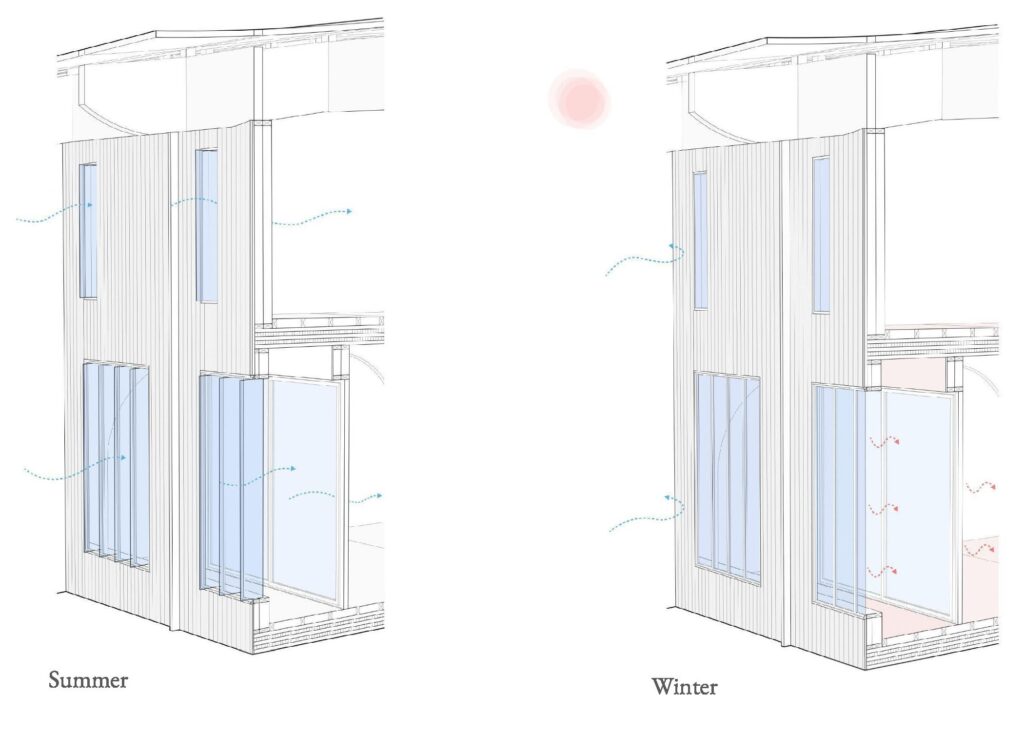
Offices and Shared Spaces:
On the top floor, which houses offices and shared spaces, the façade varies in transparency, with the cladding pattern adapting to the spatial functions within.
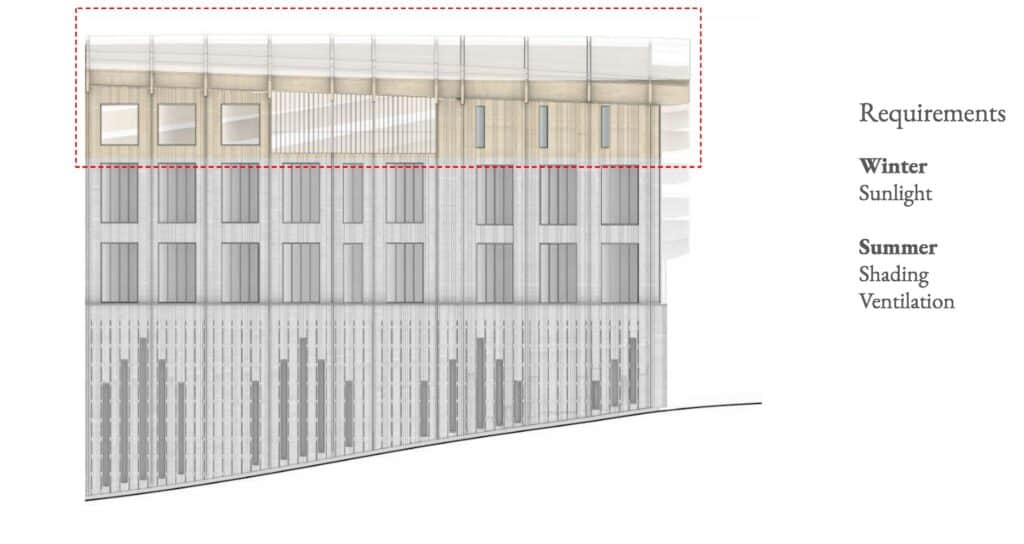
Roof and Office Spaces facade Materials:
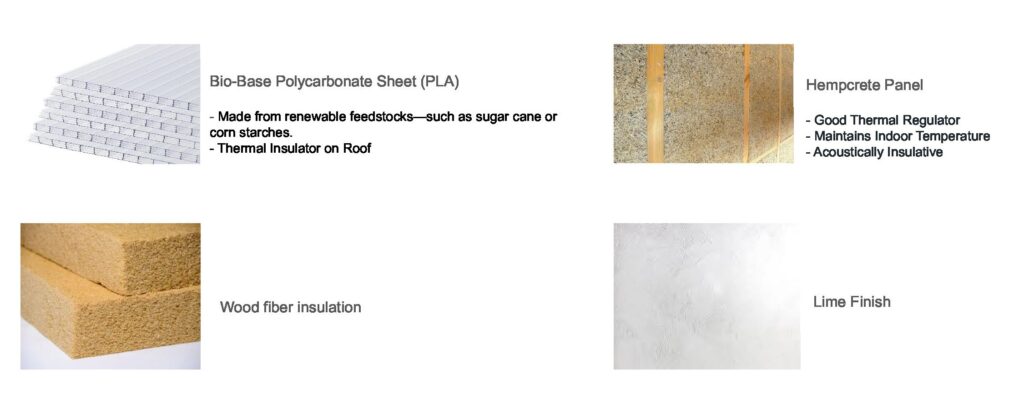
Offices and Shared Spaces Details:
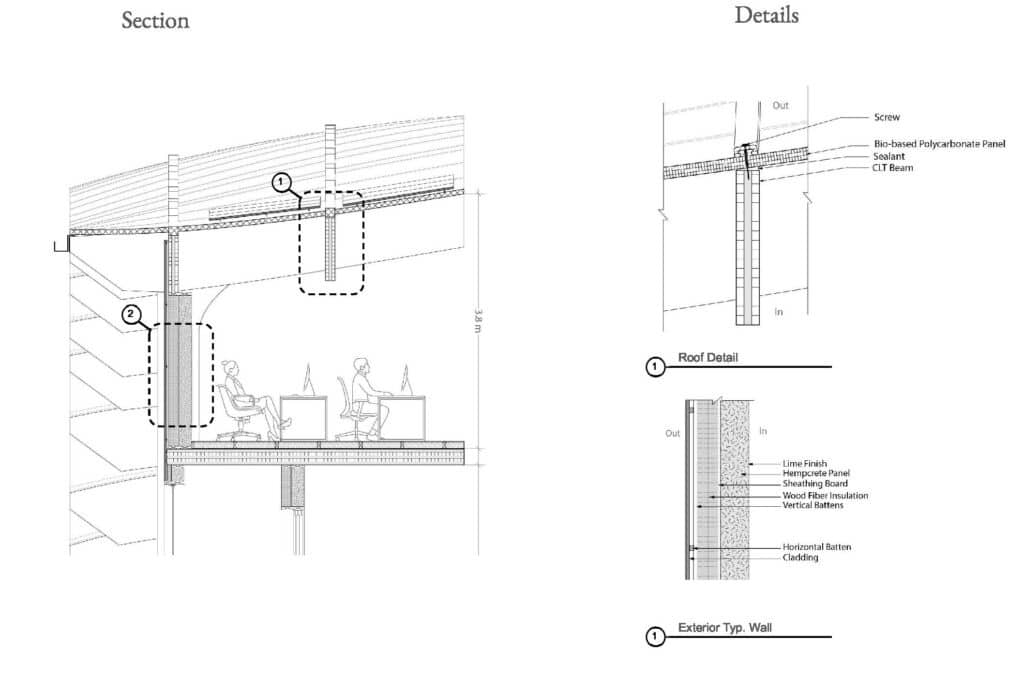
Partial Facade Elevation and Axon:
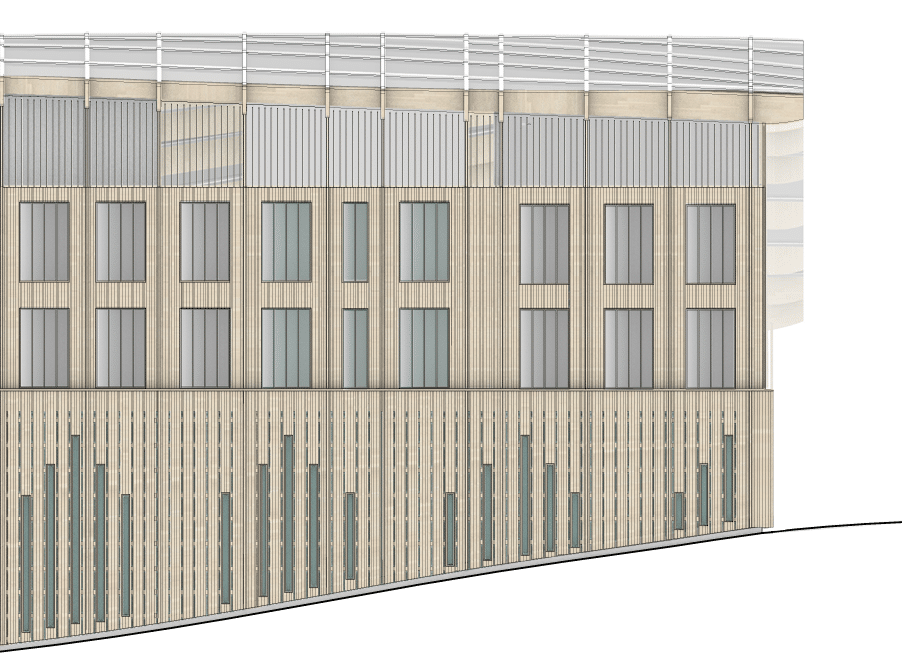
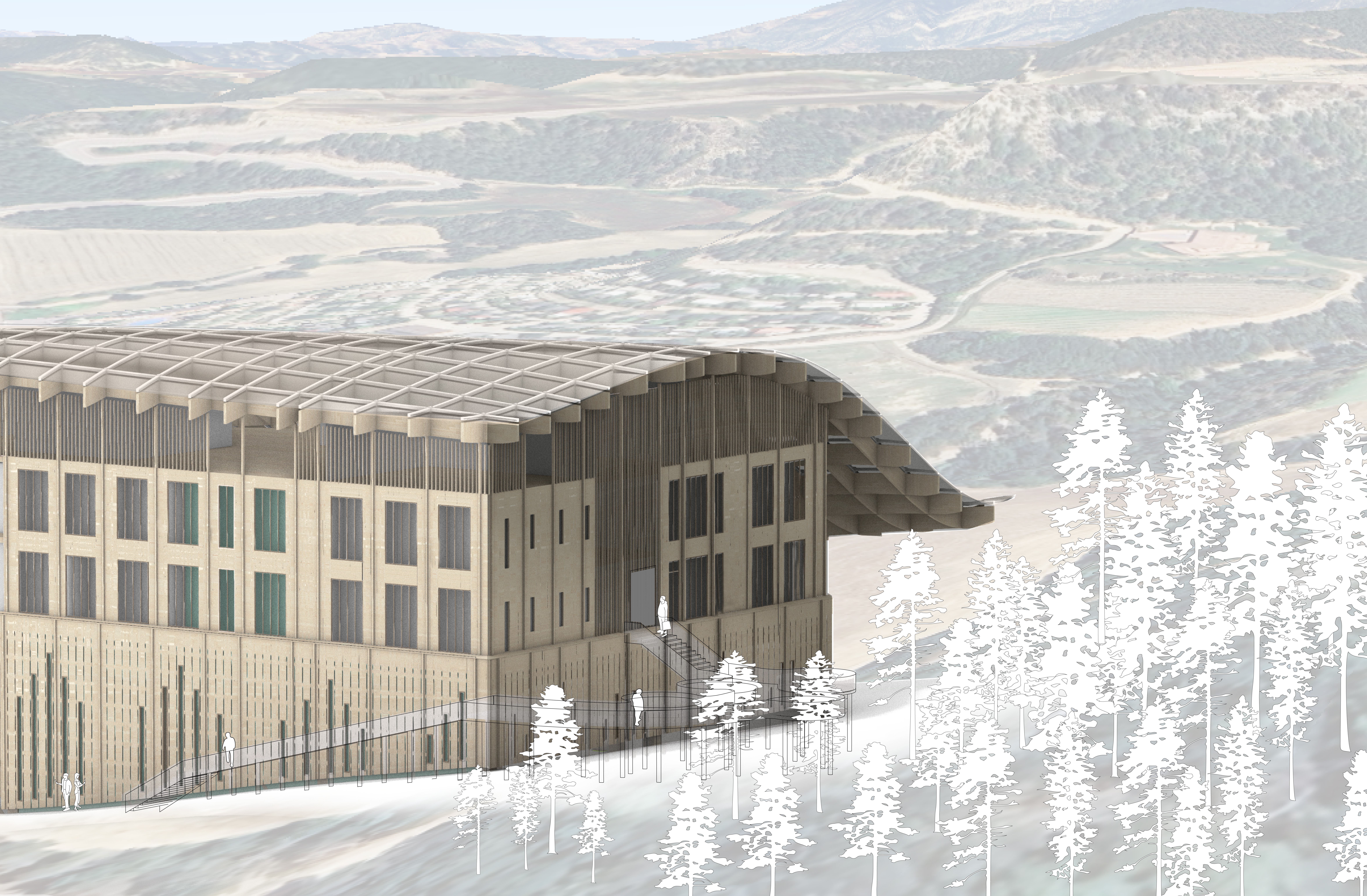
Physical Model:
